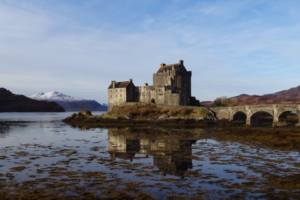VISIT SCOTLAND
Land of castles, lochs, whisky and golf, the land of Scotts will conquer your heart with its scenic landscapes and incredibly nice people.
Currency
£ - Pound sterling (1£ ≃ 1,1€ ≃ 1,21$)
POPULATION
5,5 millions
MAIN LANGUAGES
English, Scots, Scottish Gaelic
AREA
77,933 km²
TIME ZONE
UTC+1 / UTC+2
FLAG
🏴
Pick a (Scottish) destination
Make your choice from the list below or the map to access all the articles related to specific cities or regions of Scotland.
SCOTLAND HIGHLIGHT ATTRACTIONS

WALK EDINBURGH'S ROYAL MILE
The centre of Scotland's historic capital is the Royal Mile. It runs between Holyrood Palace and Edinburgh Castle, two key sites in Scotland's royal past.

CASTLE BINGE
The fact that a castle is always nearby, no matter where you are in Scotland, is one of its finest qualities. The castles of Scotland are among the most recognizable in the entire world, and they are as much a part of the country's scenery as its beautiful lochs and majestic mountains.

HIKE IN GLEN COE
Glen Coe is a lovely valley that has been recognized as a national scenic region as well as a national wildlife reserve.

ROAD TRIP IN ISLE OF SKYE
The Inner Hebrides archipelago's main island, Skye, is renowned for its untamed scenery. Some of Scotland's most famous sights are there, including the Old Man of Storr and the Neist Point lighthouse.

MEET LOCALS IN GLASGOW
The Scottish Opera, Scottish Ballet, and National Theatre of Scotland are just a few of the cultural organizations that call Glasgow home today. This city is also home to outstanding museums and a bustling music scene.
ETHICAL WILDLIFE TOURISM IN SCOTLAND
Did you know?

Scotland’s national emblematic animal is the Unicorn.
ALL SCOTLAND BLOG ARTICLES

EDINBURGH
Coming soon

GLASGOW
Coming soon

ISLE OF SKYE
Coming soon






